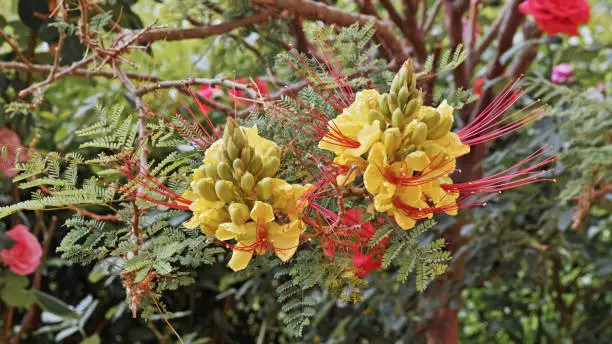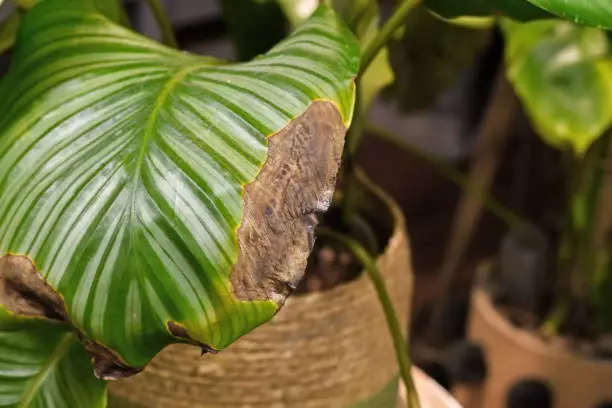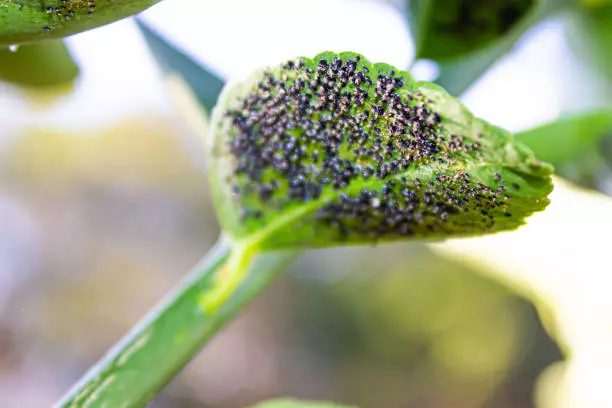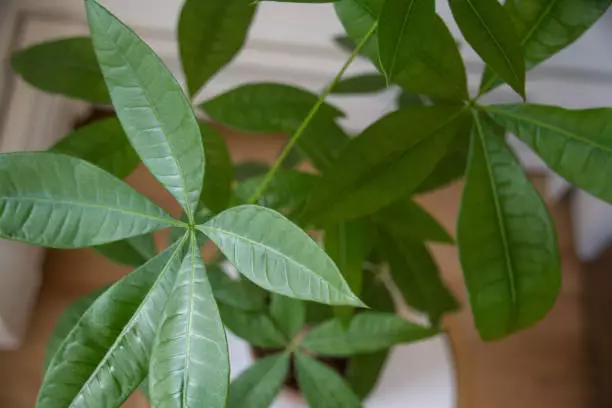When hibiscus plants show signs of curling leaves with stunted growth, the problem is likely to be aphids. The tiny black bugs suck away the juices from the plant’s leaves, causing damage to the tropical plants. The best solution is to quickly get rid of the aphids on hibiscus plants. But how?
You might want to grab a fast aphid treatment such as Bonide Systematic Insect Control and kill the aphids permanently because these tiny black bugs are more dangerous at transmitting plant viruses than they are at causing physical damage to the plant.
Signs of aphids on Hibiscus
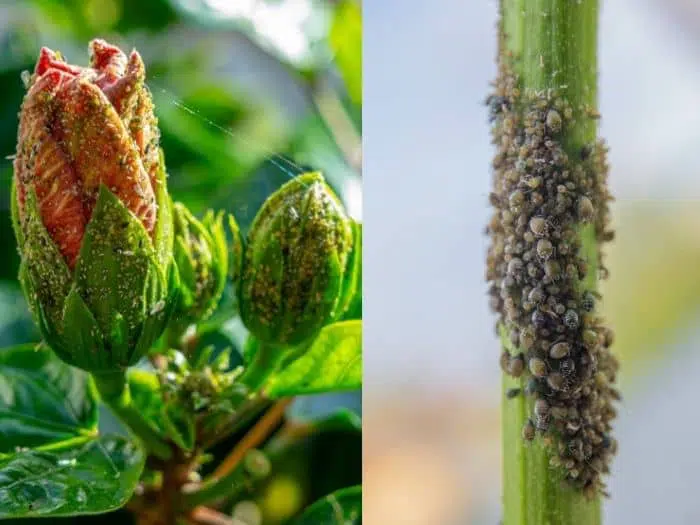
If you’ve noticed that some of your hibiscus leaves are curling and that there are small greenish or tiny black insects on the stems of your hibiscus plant, you’re likely dealing with an aphid infestation.
Characteristically, aphids appear as soft-bodied, pear-shaped insects sized about 1/8 of an inch or less. Their mouthparts are adapted to piercing and sucking – that’s why they cause damage to hibiscus and nearly any annual plant.
The signs of aphids on hibiscus include:
- Presence of small greenish bugs on stems, leaves, and shoots
- Hibiscus leaves curling
- Black, fungal-like growth on the plant
- Small holes in leaves
- Sticky spots on the plant
- Leaves turning yellow and falling off
- Flower buds failing to open
- Stunted shoots.
Pro tip: Aphids like to attack newly forming buds on hibiscus plants. As soon as you observe the pests, wash them off with a strong water spray before they cause any significant damage to the plant. It is much easier to control a small aphid infestation permanently with this simple treatment.
How to get rid of aphids on hibiscus
The best way to control aphids on hibiscus permanently is to begin treatment early before the pests multiply and cause damage to the plant. A powerful spray of water usually gets rid of the early infestation. However, there are other effective ways of getting rid of aphids on hibiscus plants:
Here’s how:
1. Flush the aphids off with water
At an early stage, aphid infestation on hibiscus may have a small population that’s easy to control. A forceful application of water will dislodge them from the leaves, stems, and buds of your hibiscus plant.
Here’s how to do it:
Using a garden hose, flush water onto your hibiscus plants directly targeting the areas with aphids to dislodge as many of the pests as possible. Some of the aphids will die from the blast of water at high pressure while others that fall off alive will die from starvation.
Their slow movement means that they can’t reattach themselves to your hibiscus plants fast enough to survive the extermination. Eventually, they will die from a lack of energy.
2. Treat with Imidacloprid
Imidacloprid is what kills aphids on the hibiscus systemically. Being a systemic pesticide, it kills sucking insects such as aphids, as well as soil insects and termites in gardens.
To get rid of aphids on the hibiscus permanently, treat the soil where you’re growing the hibiscus with Imidacloprid and allow it to be absorbed by the plant. As the aphids feed on hibiscus plants, they will ingest the pesticide and die off quickly.
The hibiscus plants take up the chemical from the soil via their roots and into the phloem vessels. Imidacloprid will kill all the aphids on your hibiscus in roughly seven days by inhibiting the transmission of stimuli within their nervous systems.
If you have recurring aphid infestations on your hibiscus, Imidacloprid soil drench treatment will help control the pests permanently because it remains in the plants and the soil for the duration of their growth.
What if you don’t want to spray chemicals on indoor hibiscus? What can you use to kill the aphids?
3. Spray a soap solution on the aphids
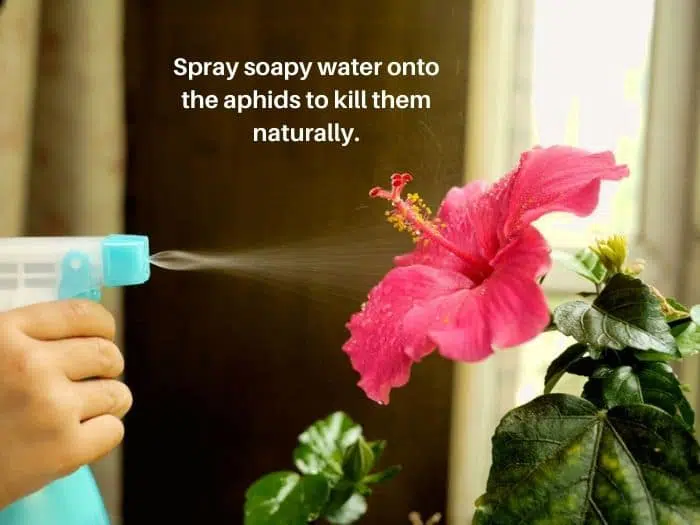
Add a handful of detergent to a bucketful of water and then mix up the solution by stirring it with your hand or a stick. Next, transfer the solution to your spraying pump and spray it directly on the hibiscus leaves, stems, and flower buds where the aphids are sticking to get rid of them.
Rinse the excess soap off the hibiscus by spraying clean water over them.
The chemicals present in soaps and detergents can kill aphids and many other plant pests. In addition, dawn dish soap (or other detergents) coats the bodies of the aphids, cutting out the supply of oxygen and killing them in the process.
Soap solution is a more natural option for getting rid of aphids on hibiscus plants as opposed to chemical or insecticide options.
4. Spray an insecticide on the aphids
Spraying the affected leaves directly with insecticides will also help with the instant elimination of aphids from your hibiscus. You should adjust the nozzle of your spraying hose to the finest level such that it jets out the thinnest stream of the chemical solution inside the can; as spraying is only effective if the chemicals come directly into contact with the pests.
Here are some of the best aphid killers to use:
- Bonide Systemic Insect Control
- Ortho Max Flower, Fruit, and Vegetable Insect Killer
- BioNEEM Insecticide & Repellant Ready to Spray or Concentrate
- BioAdvanced Advanced Rose & Flower Insect Killer
When spraying your aphid-infested hibiscus plants with insecticide solutions, always remember to target the underside of the leaves, as this is where aphids tend to hide.
You may also want to repeat this treatment a few times for maximum efficacy, as insecticides are only effective in killing aphids on the day that they’re applied. Any aphids that survive the initial treatment can still cause damage to your plants unless you spray repeatedly.
5. Apply neem oil
Insecticidal soaps and neem oil are common garden natural pesticides. The neem oil derived from neem seeds is great at getting rid of aphids on the hibiscus and also controlling fungal infections.
Here’s how to eliminate aphids on hibiscus with neem oil:
Make a neem oil solution and pour it into your spray bottle. Spray onto the aphids on your plants, making sure it comes into contact with the pests. Repeat this treatment twice a week to get rid of all the aphids for good.
Aphids feed on the sap within the stems and leaves of your hibiscus. If the infestation is severe, with massive aphid populations on every hibiscus plant, your hibiscus leaves may appear curled or yellowed.
What’s more, your plant may experience stunted growth as a result. To stop aphids from damaging the health of your hibiscus plants, try the above natural and chemical solutions.
Prevention
To keep aphids away altogether, or to prevent the few present from reproducing and causing significant damage to your hibiscus plants, you should consider the following measures:
- Prune the affected leaves: if the aphid infestation is at its initial stages and the aphids are present on just a few leaves, you can cut off these leaves before the aphids reproduce and spread to the rest of your hibiscus plants.
- Avoiding the use of fertilizers: nitrogen fertilizers usually encourage new growth, and it is the new, younger pants that aphids prefer to feed on. Therefore – if you spot a few aphids on your hibiscus plants, the wise thing to do would be to stop using fertilizers immediately.
Aphids identification guide
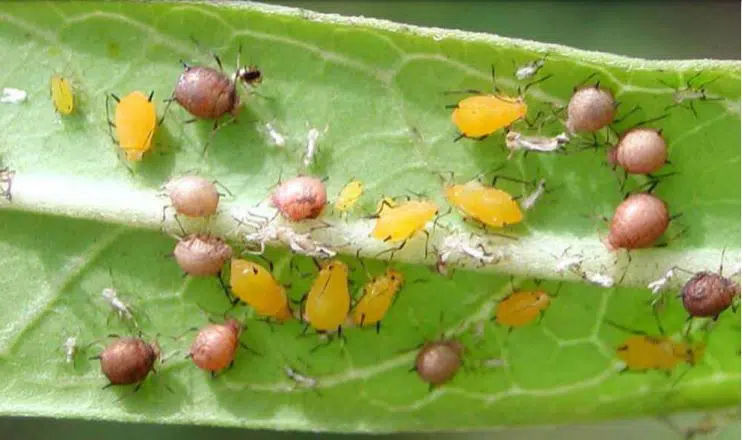
What do aphids look like on hibiscus and other indoor plants? It is easy to confuse the little black bugs on hibiscus with other pests such as thrips and even spider mites.
There are many species of aphids and they come in different colors. While the most common usually bear a yellow-greenish color, don’t be surprised if you ever come across black, brown, or red-colored aphids on your hibiscus plants.
Also, adult aphids may or may not have wings, depending on the season. This characteristic helps them move from depleted food sources to the next whenever their population numbers soar.
Apart from the differences in terms of color and the ability to fly, everything else about aphids is quite similar. For starters, they’re tiny, about 0.06 inches long. They’re also pear-shaped. Their most distinctive identifying feature- however- isn’t a physical but a behavioral characteristic; aphids don’t rush away when disturbed, unlike many other species of plant insects.
Finally, you can identify aphids from the honeydew they secrete. If you notice a black fungal-like growth on the stems, leaves, and flower buds of your hibiscus plants, you most certainly deal with an aphid invasion.
The black substance is sooty mold fungi, whose growth is usually stimulated by the honeydew secreted by the aphids. And it’s not just fungal growth that the honeydew stimulates; you may also spot other small insects like ants on your hibiscus plants as a result.
References
-
University of Wisconsin-Madison Division of Extension. (n.d.). Aphids. Retrieved from https://hort.extension.wisc.edu/articles/aphids/
-
University of Wisconsin-Madison Division of Extension. (2018). Aphids (Publication A3928-01). Retrieved from https://mastergardener.extension.wisc.edu/files/2018/10/aphids.pdf
-
University of Wisconsin-Madison Division of Extension. (n.d.). Managing aphids in greenhouses. Retrieved from https://hort.extension.wisc.edu/articles/managing-aphids-greenhouses/
-
University of Wisconsin-Madison Division of Extension. (n.d.). Aphids (2). Retrieved from https://hort.extension.wisc.edu/articles/aphids-2/
-
Connecticut Agricultural Experiment Station. (n.d.). Hibiscus (Hibiscus spp.). Retrieved from https://portal.ct.gov/CAES/Plant-Pest-Handbook/pphH/Hibiscus-Hibiscus
-
Chase, A. R., & Caldwell, R. D. (2009). Hibiscus production guide (HS-797). University of Florida IFAS Extension. Retrieved from https://ufdc.ufl.edu/IR00004255/00001/pdf
